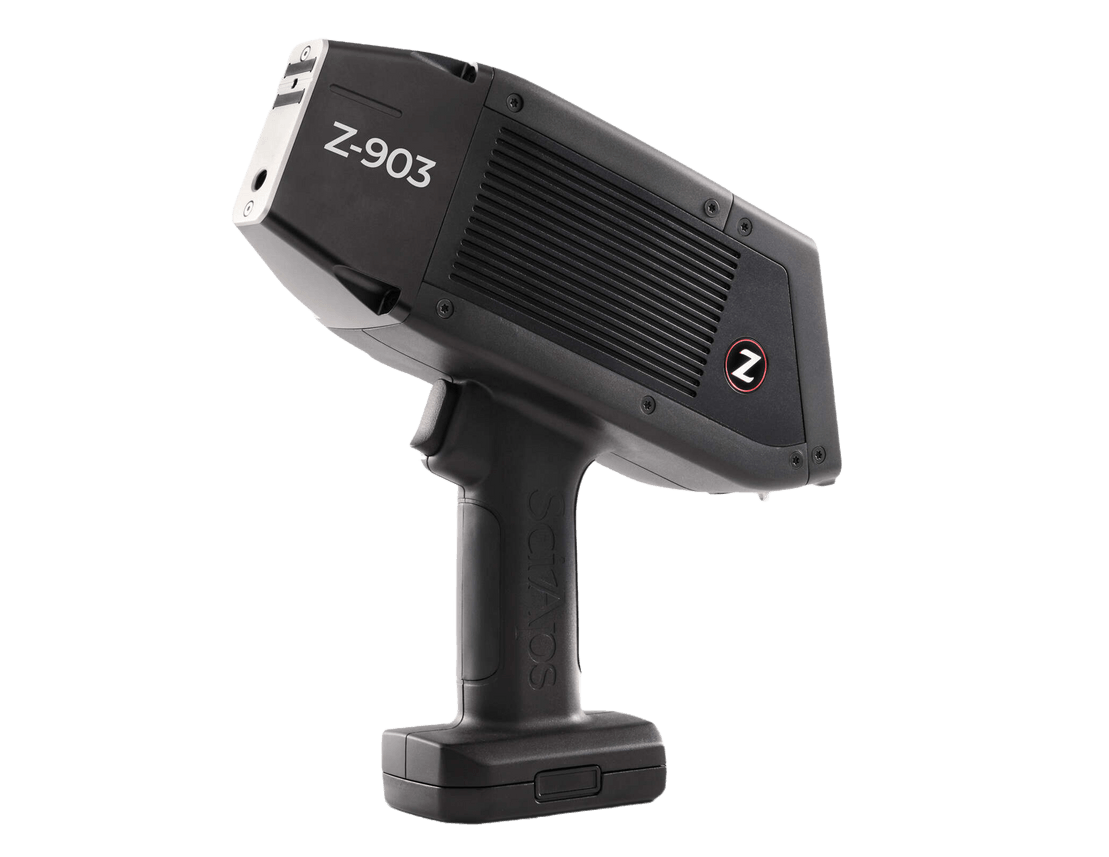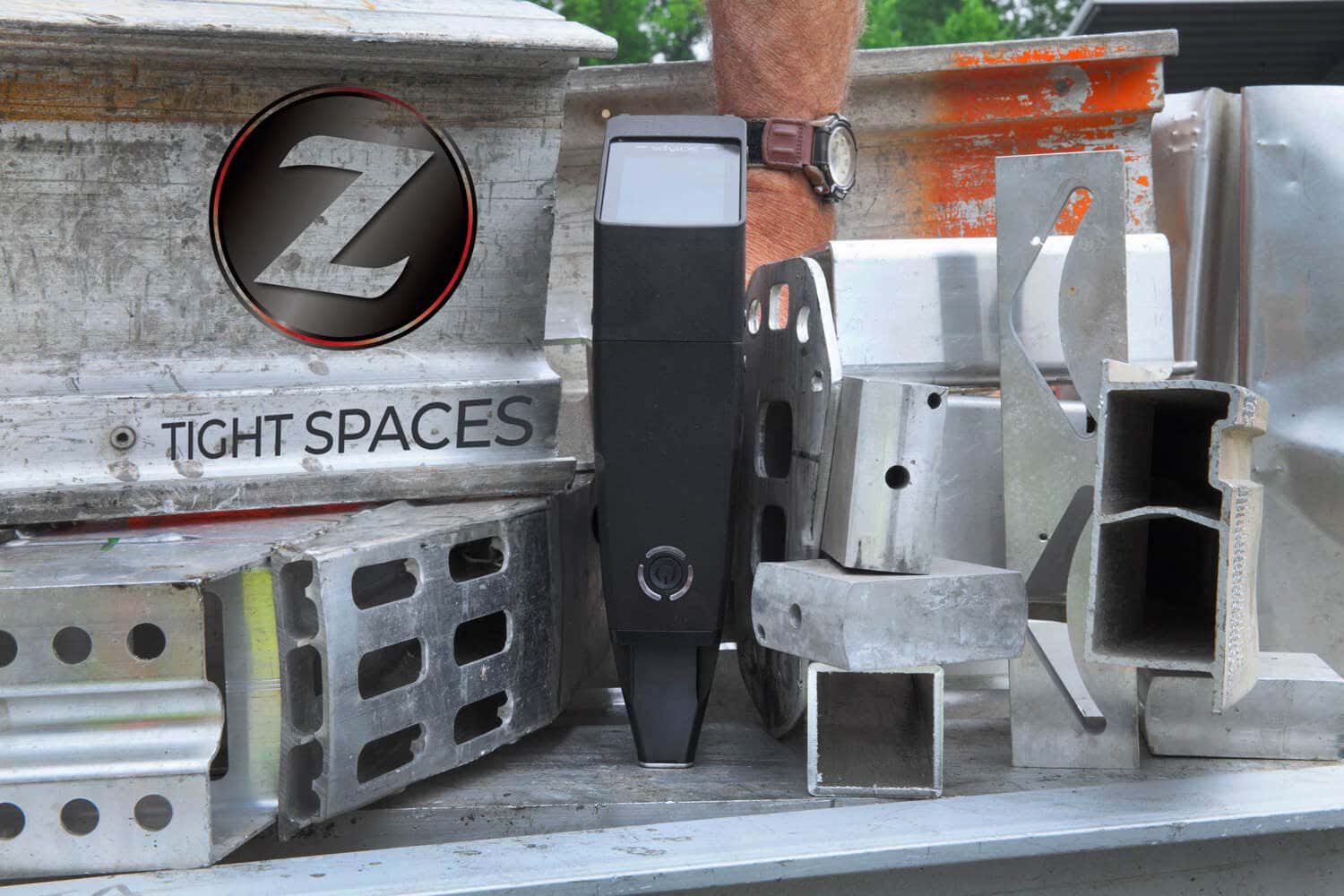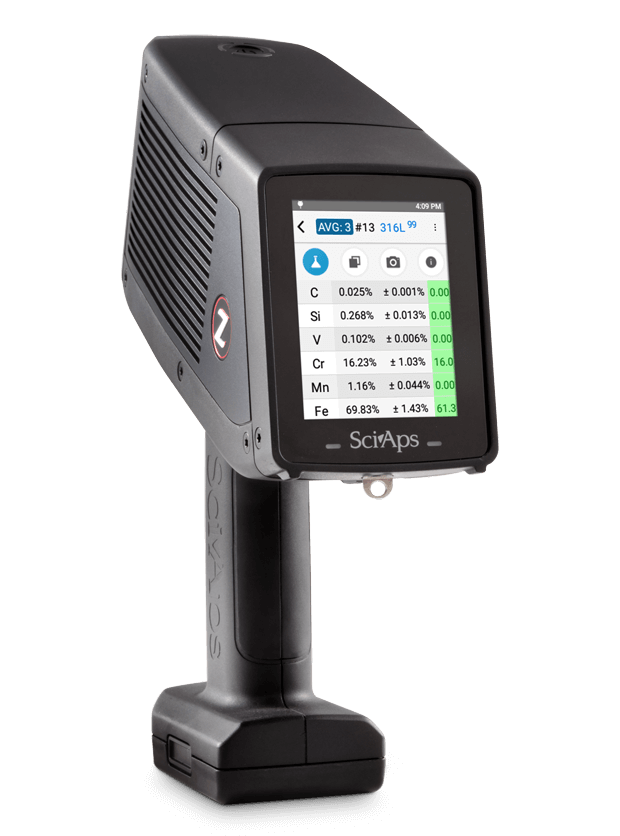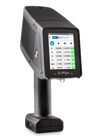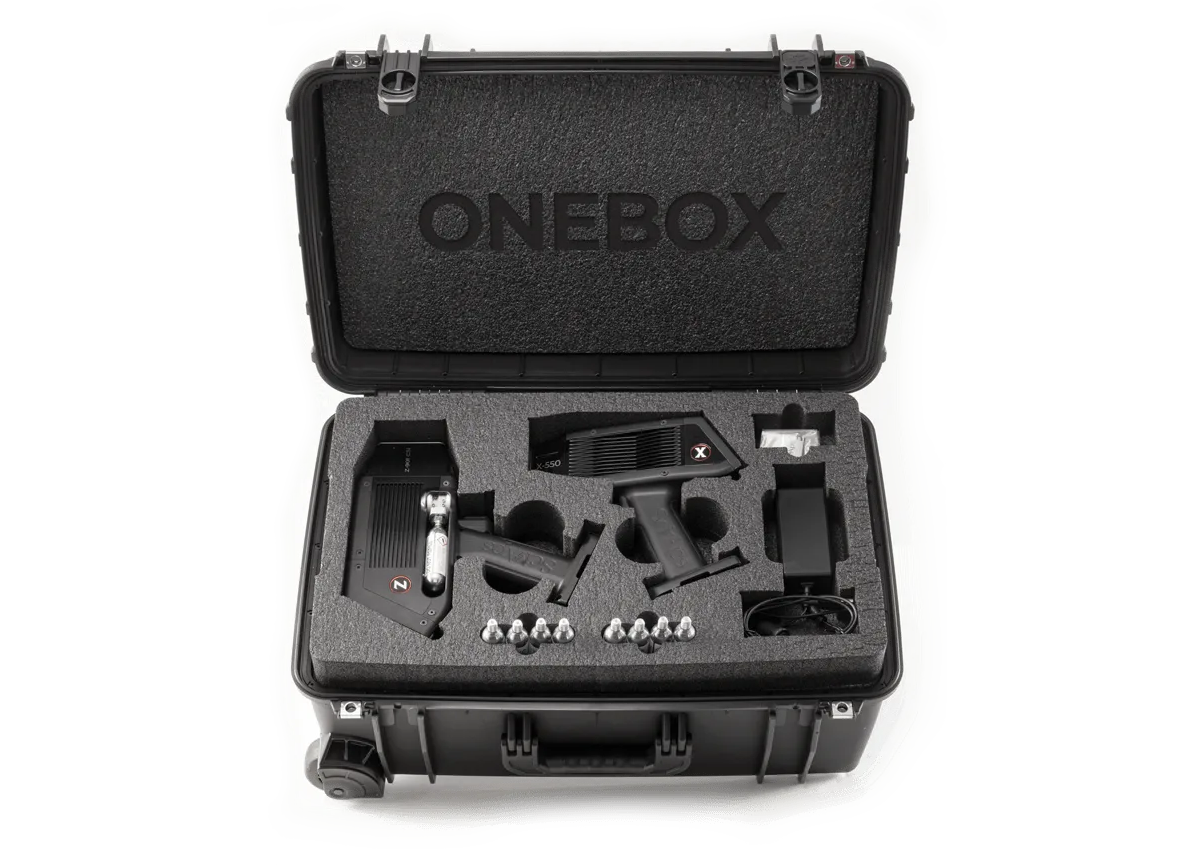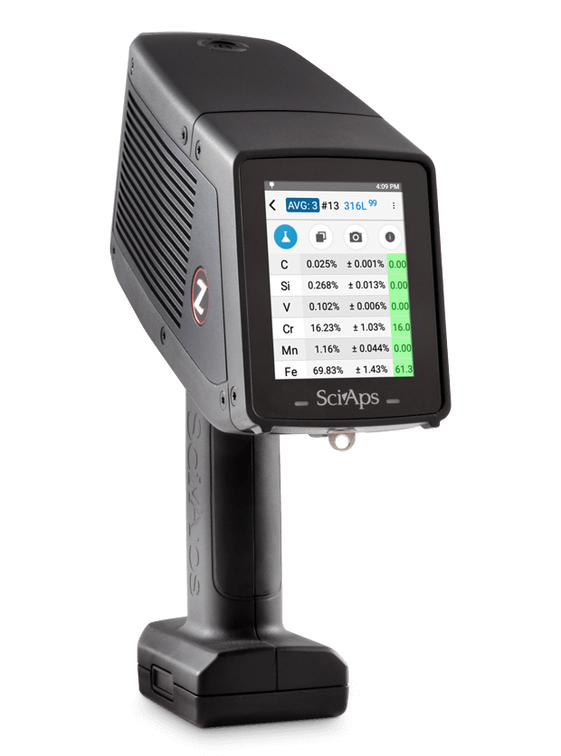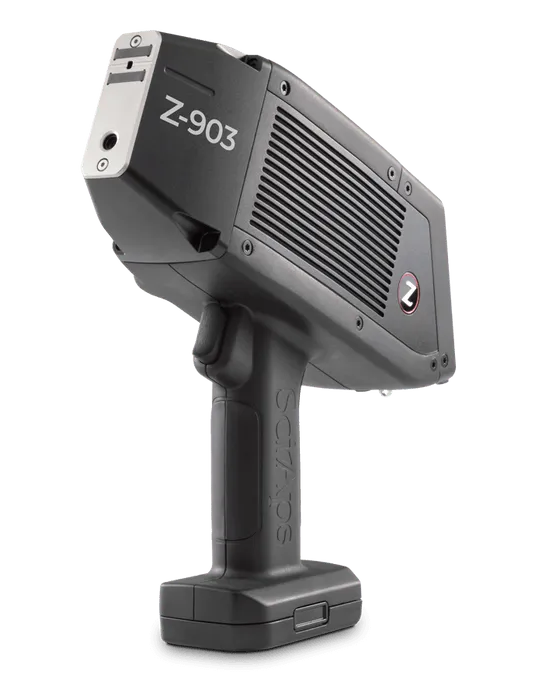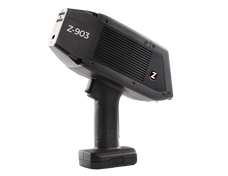A powerful combination: SciAps is a Malvern Panalytical company

One analyzer, every element
The SciAps Z-903 handheld LIBS analyzer accomplishes what no other portable analyzer has done. It’s a handheld that measures every element in the periodic table of elements – from H to U.
It uses the same powerful laser as SciAps Z-901 and Z-902 models, but with an extended spectrometer range from 190 nm to 950 nm.
- Extended range allows measurement of emission lines from H, F, N, O, Br, Cl, Rb, Cs and S
- Measures more sensitive line for lithium near 675 nm to achieve 2-5 ppm limits of detection
- Measures more sensitive, interference-free line for potassium (K), free of heavy iron interference - a classic issue with traditional K lines
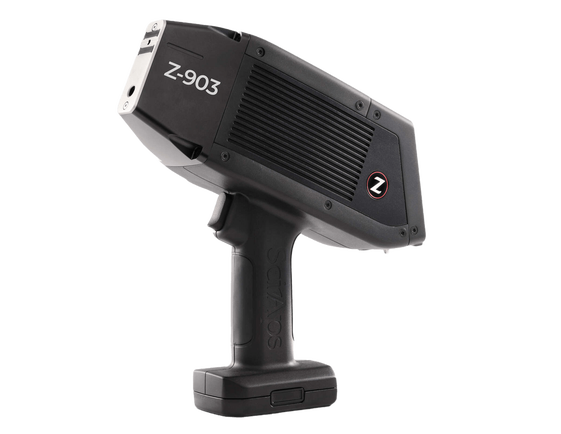
Z-903 features
-
Triple spectrometer: 190-950 nm with 3x resolution
-
Argon cartridge: an inert argon environment improves spectral signal-to-noise ratio
-
Internal camera: precise targeting of analysis location
-
Macro-camera: photo documentation of samples, reading barcodes and QR codes
-
Report generation: full featured, with available cloud data management and reporting
-
Narrow snout: tapered for wields or difficult to access test locations
-
Laser safety sensor: patented sample sensor allows Class 1 operation subject to LSO approval
-
Intuitive Android operating system with app based software
-
High resolution display: rear-facing display for easy viewing
-
Rugged metal body: maximum durability and minimal service costs
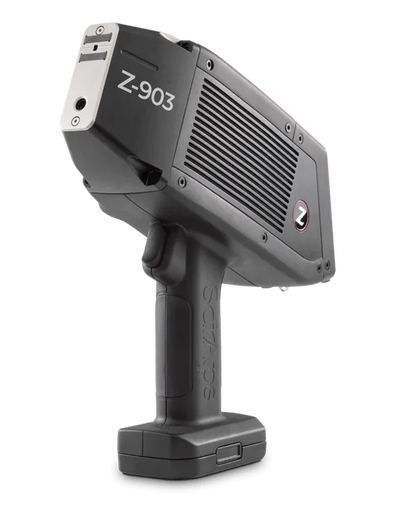
Bulk samples and micro-analysis
The Z-903 is the world’s only handheld offering elemental micro-analysis in the field. Users may set up the raster to a grid pattern, using the 100 um laser spot size for elemental heat mapping point-by-point.
For bulk samples, the Z can be set to average results from every raster location for a bulk sample result, just like handheld XRF analysis.
Image: An X-ray fluorescence map (XFM) for Fe. SciAps handheld LIBS now allows targeted microanalysis of geological samples in the field. The corresponding LIBS element distribution map for Fe shows excellent correlation with the XFM map. Australian Synchrotron’s X-ray fluorescence microprobe (XFM) data courtesy of Shaun Barker (University of Waikato) and Jeremy Vaughan (Barrick).
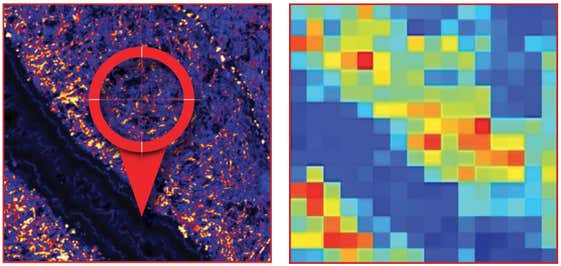
Complete user control
The laser strike pattern, cleaning shots, spectrometer settings are all under user control.
The analyzer includes advanced software for modifying all settings, comparing spectral data, and for generating quantitative calibration curves.
The Z-903 features the same Android OS and intuitive App-driven software as all other SciAps models.
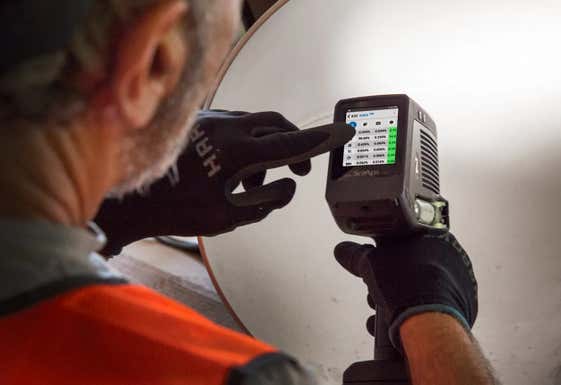
In use globally
The Z-903 is most widely used for mineral exploration, including lithium in both hard rock and brines.
It is also used in forensics, authentication, archeology and oil/gas exploration due to the wide elemental range.

